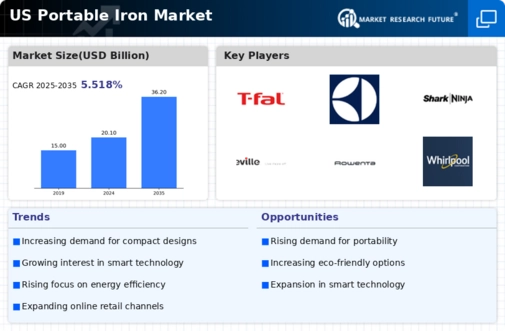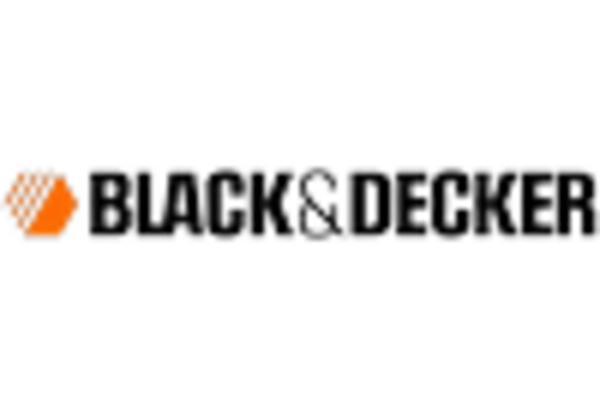The portable iron market is characterized by a dynamic competitive landscape, driven by innovation, consumer preferences for convenience, and sustainability. Key players such as Philips (NL), Panasonic (JP), and Black+Decker (US) are at the forefront, each adopting distinct strategies to enhance their market positioning. Philips (NL) emphasizes technological advancements, focusing on steam technology to improve ironing efficiency, while Panasonic (JP) leverages its reputation for quality and reliability, targeting eco-conscious consumers with energy-efficient models. Black+Decker (US) adopts a more aggressive approach, expanding its product line to include smart features that appeal to tech-savvy users. Collectively, these strategies contribute to a moderately fragmented market, where competition is fierce yet offers opportunities for differentiation.
In terms of business tactics, companies are increasingly localizing manufacturing to reduce lead times and optimize supply chains. This trend is particularly evident in the portable iron market, where companies are investing in regional production facilities to better serve local demand. The competitive structure remains moderately fragmented, with several players vying for market share, yet the influence of major brands is substantial, shaping consumer expectations and driving innovation across the sector.
In October 2025, Philips (NL) launched a new line of portable irons featuring advanced steam technology that reduces ironing time by 30%. This strategic move not only enhances user convenience but also positions Philips as a leader in innovation within the market. The introduction of this product aligns with the growing consumer demand for efficiency and effectiveness in household appliances, potentially increasing Philips' market share.
In September 2025, Panasonic (JP) announced a partnership with a leading eco-friendly materials supplier to develop sustainable components for its portable irons. This initiative reflects a broader industry trend towards sustainability, appealing to environmentally conscious consumers. By integrating sustainable practices into its product development, Panasonic aims to strengthen its brand loyalty and differentiate itself in a competitive market.
In August 2025, Black+Decker (US) unveiled a smart portable iron equipped with IoT capabilities, allowing users to control settings via a mobile app. This innovation not only caters to the growing demand for smart home devices but also positions Black+Decker as a forward-thinking brand in the portable iron market. The integration of technology into traditional appliances is likely to attract a younger demographic, enhancing brand relevance.
As of November 2025, the competitive trends in the portable iron market are increasingly defined by digitalization, sustainability, and the integration of AI technologies. Strategic alliances, such as partnerships for sustainable materials and technology integration, are shaping the current landscape. Looking ahead, competitive differentiation is expected to evolve, with a shift from price-based competition to a focus on innovation, technological advancements, and supply chain reliability. Companies that prioritize these aspects are likely to gain a competitive edge in an ever-evolving market.

















Leave a Comment